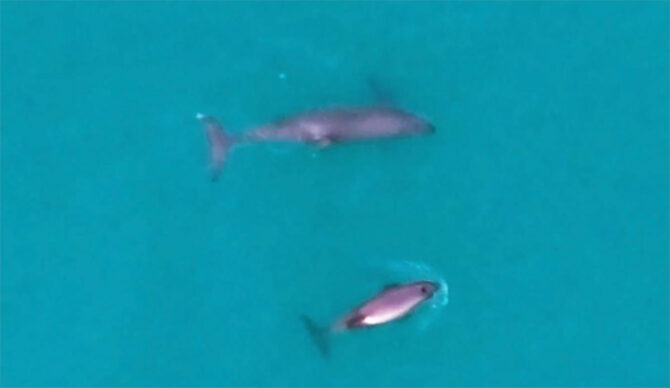
The vaquita is the world’s most endangered cetacean. There are just a handful left on Earth and they have been under an “Extinction Alert” for quite some time now. In a shred of good news, however, observers spotted at least one or two new calves.
Vaquitas are extraordinarily shy and are the world’s smallest cetacean. They’re also one of the most endangered species on Earth. With a population of only about 10, the vaquita is on the brink of extinction. At around 4-5 feet long, the vaquita is found only in the Gulf of California. As recently as 2017, it’s thought there were some 30 swimming around. As of a few years ago, fishermen in the area were still using gillnets, which are mainly focused on totoaba fish, so the little porpoises routinely get caught in them.
They’ve been listed as critically endangered since the mid-’90s, but despite a few efforts here and there — mostly just paying lip service, to be honest — their numbers have continued to dwindle. Since 1996, experts have been saying that the only way to save them is to eliminate gillnets in the areas they call home. Mexico did put a two-year moratorium on gillnets in an effort to help them reproduce, but with a slower reproduction rate – about one calf every two years – more needs to be done.
In 2024, the annual headcount found no new calves, sounding the alarm that they may only have a few years left before becoming extinct. But this year, using acoustic monitoring, underwater detectors, and just plain old eyeballs (with the help of powerful binoculars known as “big eyes”), researchers were able to confirm sightings of 7 to 10 of the cute little animals on top of the calves. They can’t be certain whether there was one or two, but even one is good news when the population is so tiny.
That said, this clearly does not mean that the vaquita porpoise is anywhere near rebounding to healthy numbers. It does, however, let us know that our conservation efforts are working, at least a little bit. The findings could help inform conservationists how best to continue their work.
“This monitoring allows us to adjust our work strategy, to reinforce actions in precise areas in order to achieve greater vigilance and protection,” said Mexico’s Undersecretary of Biodiversity and Environmental Restoration, Marina Robles García, in a statement. “But it also tells us several things: that the vaquita is still there, that it persists, that the downward trend has not continued, that there are even individuals we had not seen for several years—clearly spending time in other areas where we have not been monitoring—and that it continues to reproduce… The fact that a species continues to reproduce and appears healthy is the best indicator of its life, of its condition as a species, but also the best invitation to maintain our efforts, our hope, and our joint work.”
